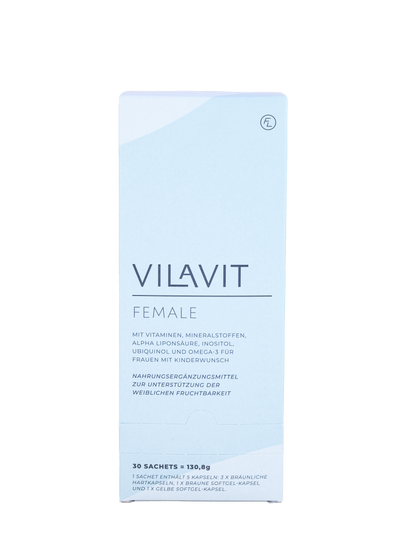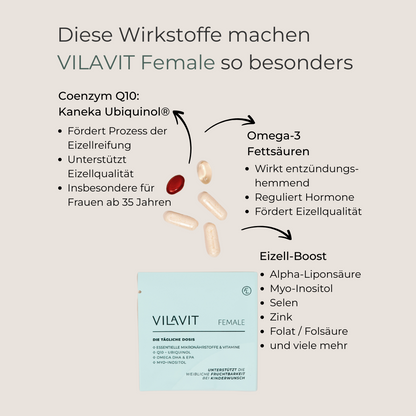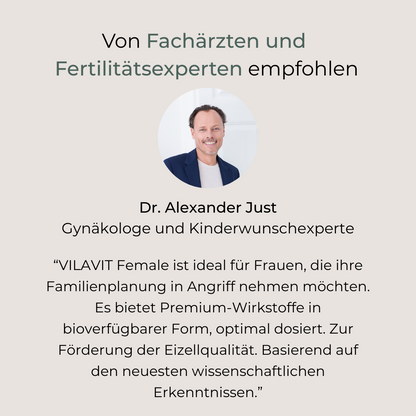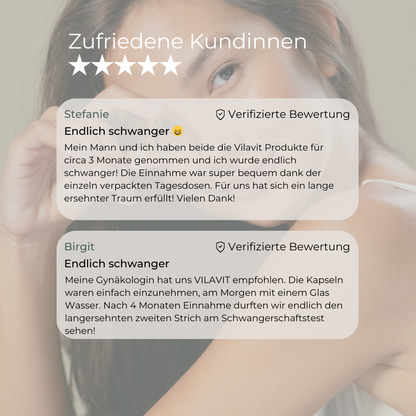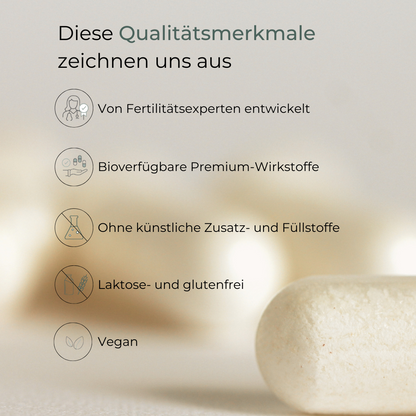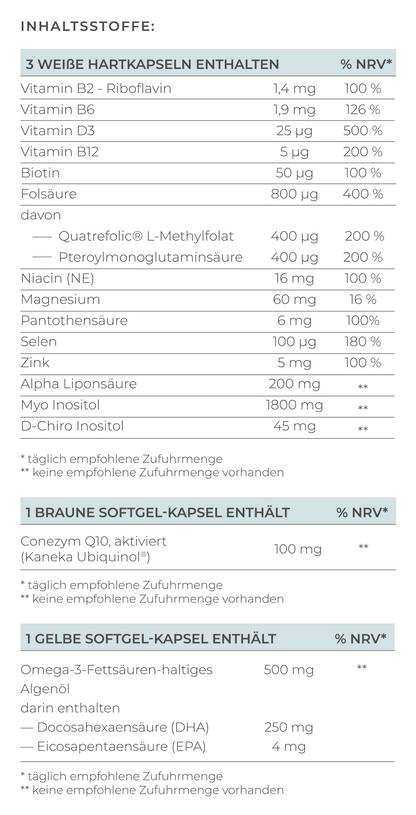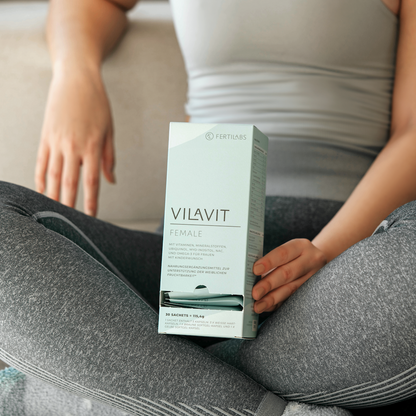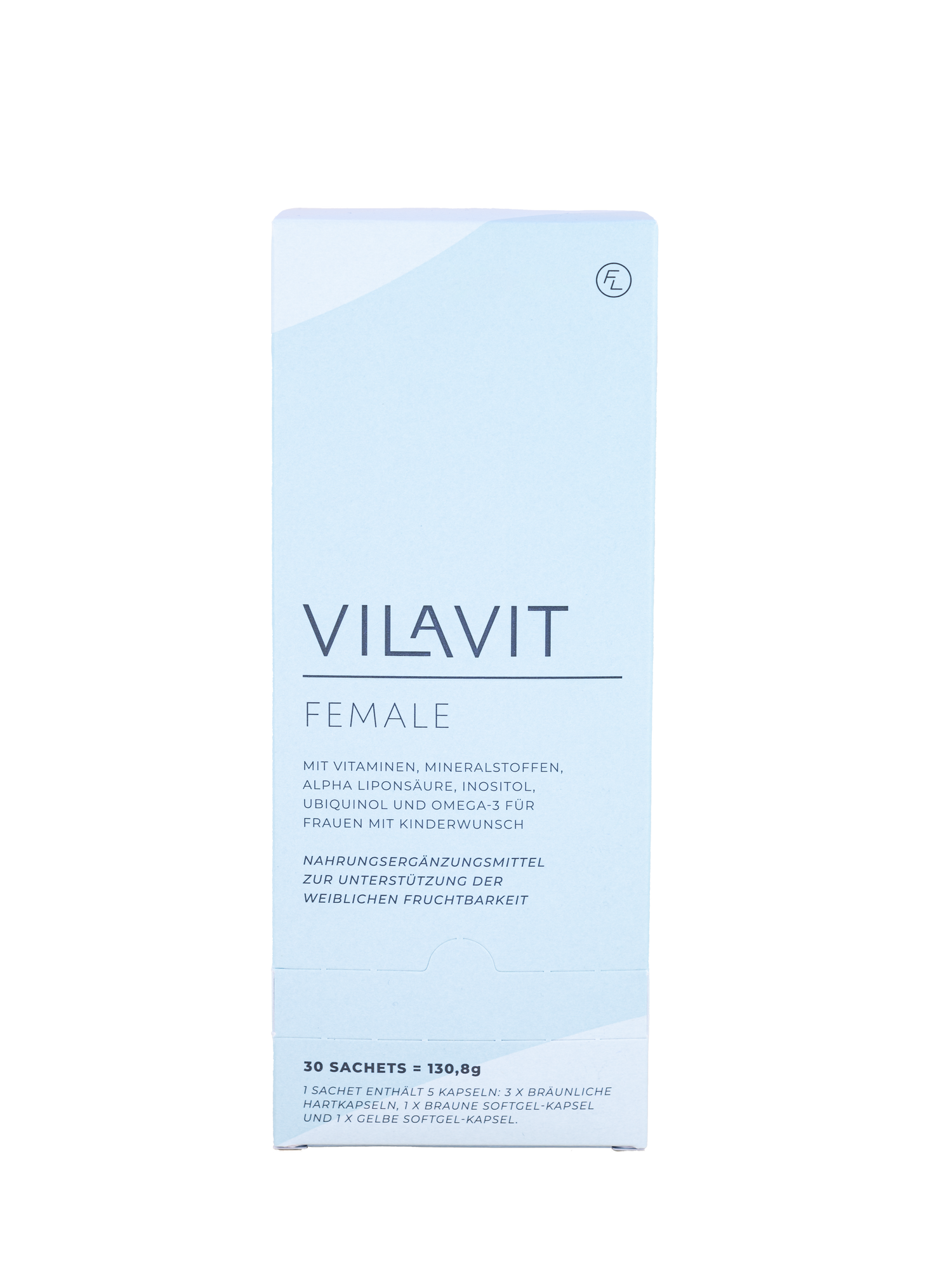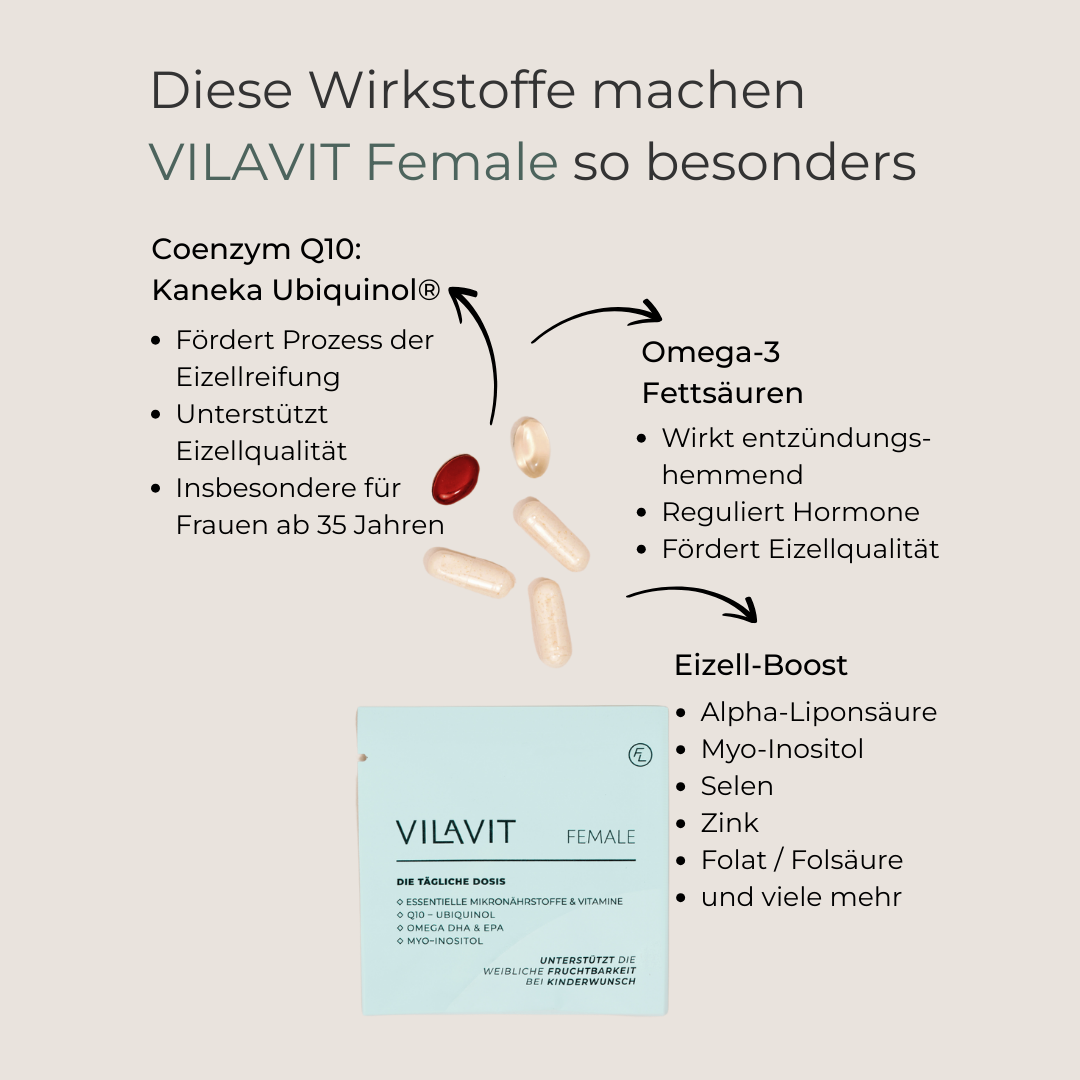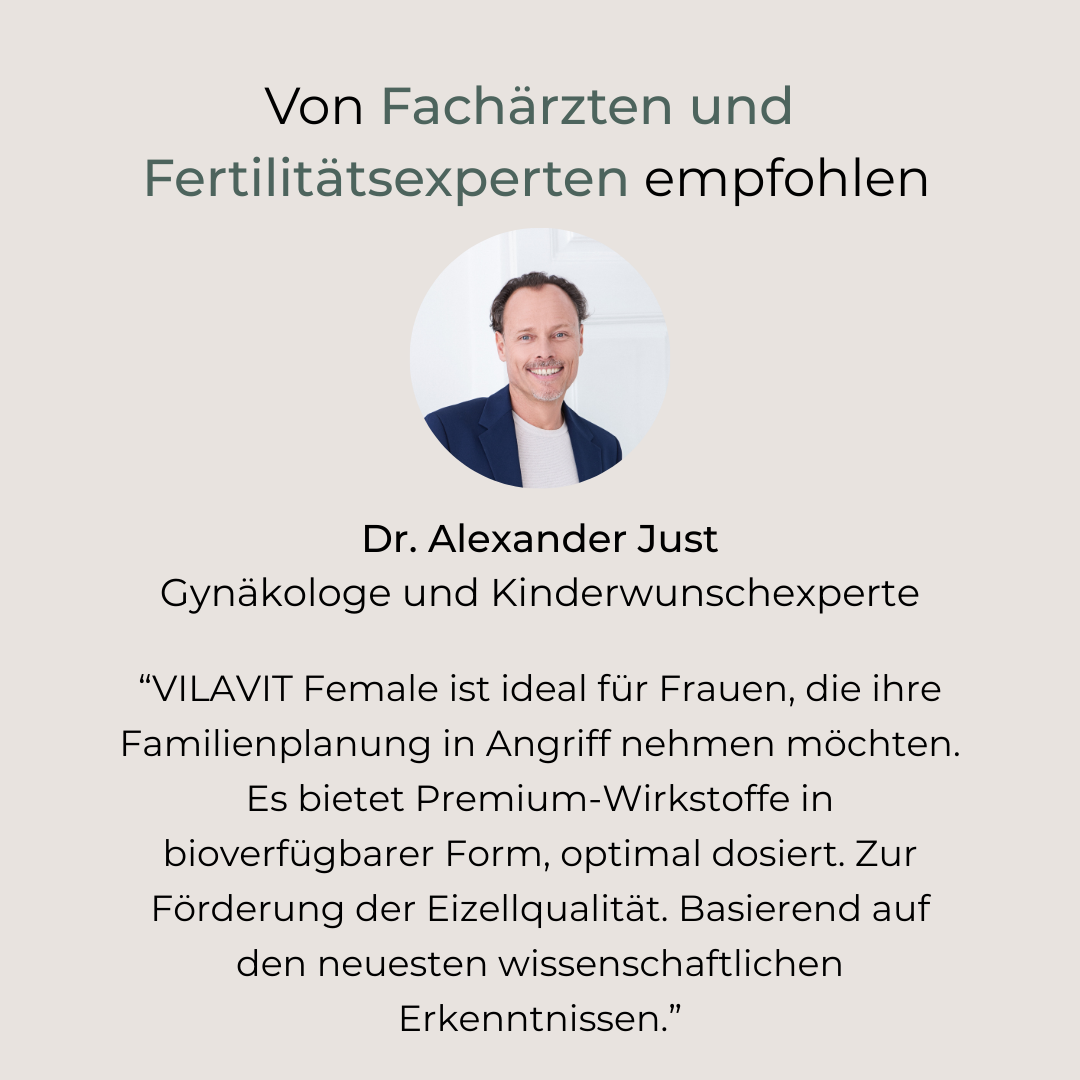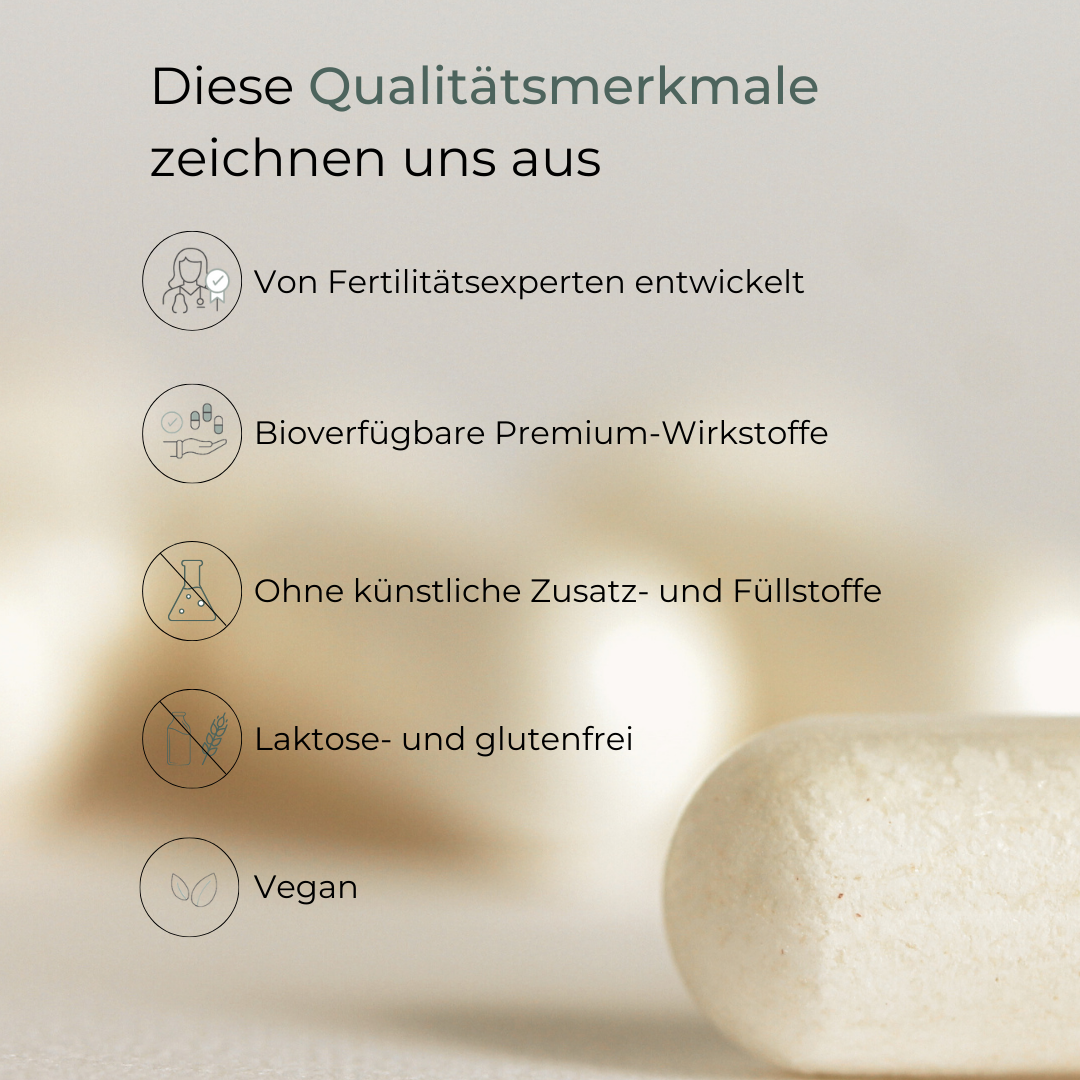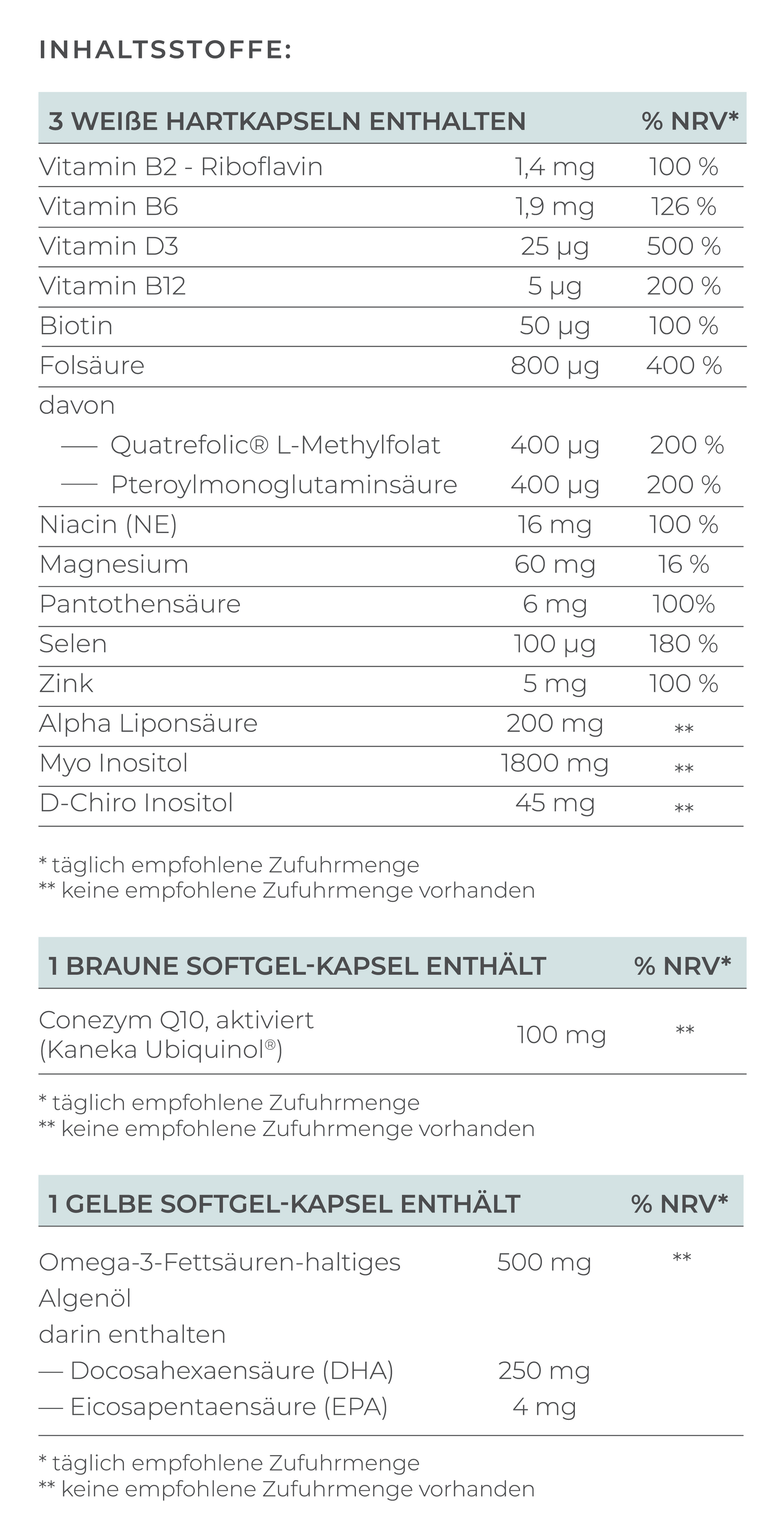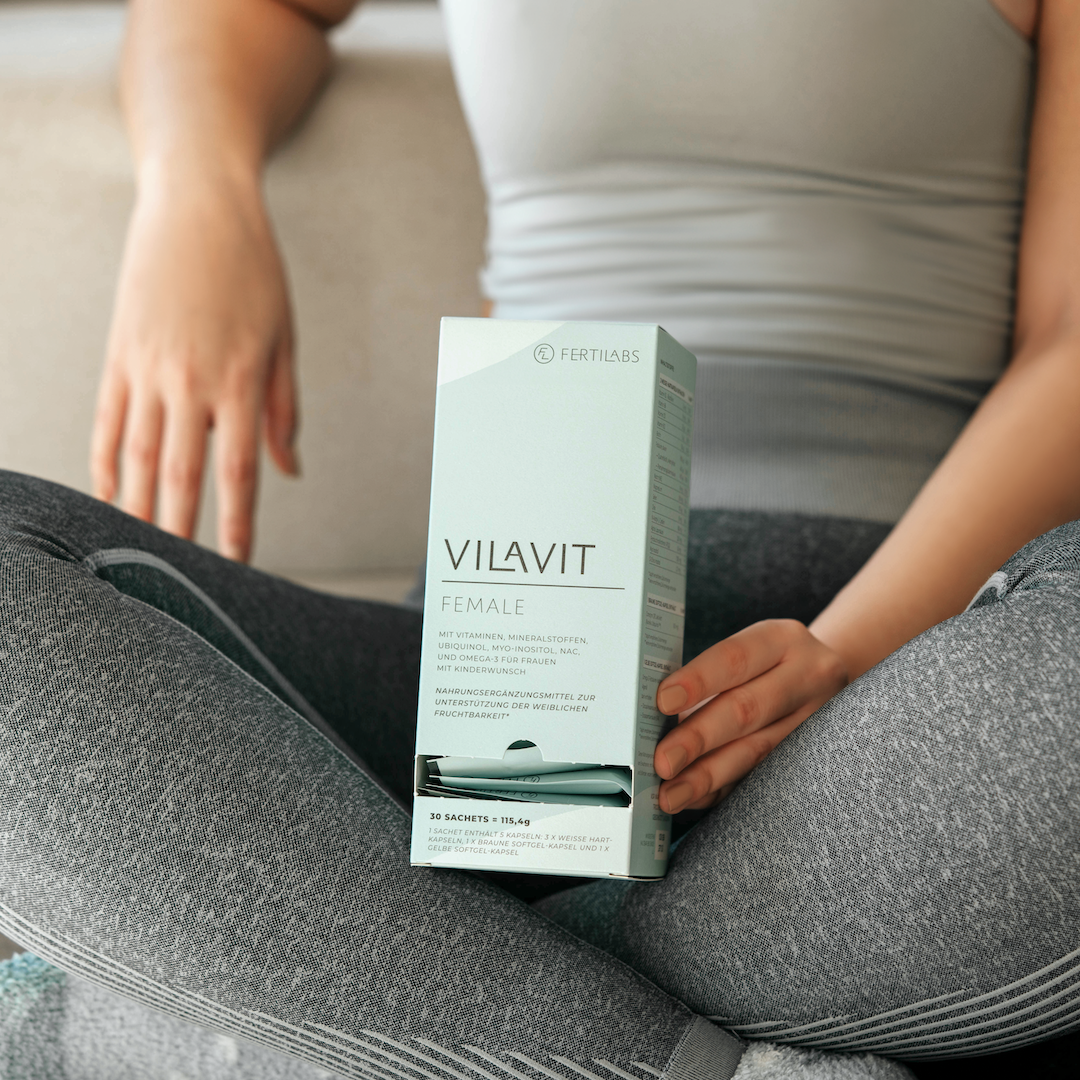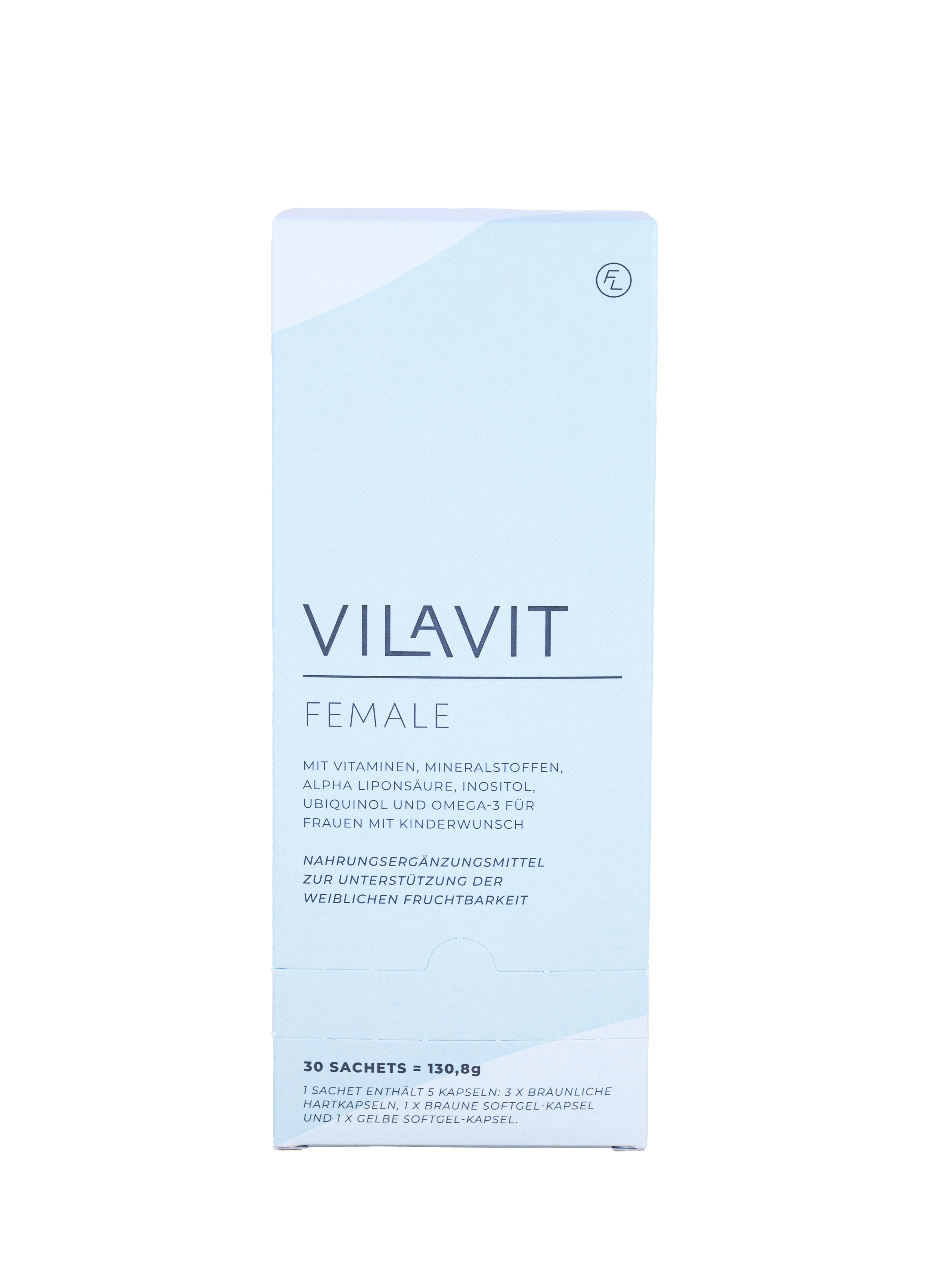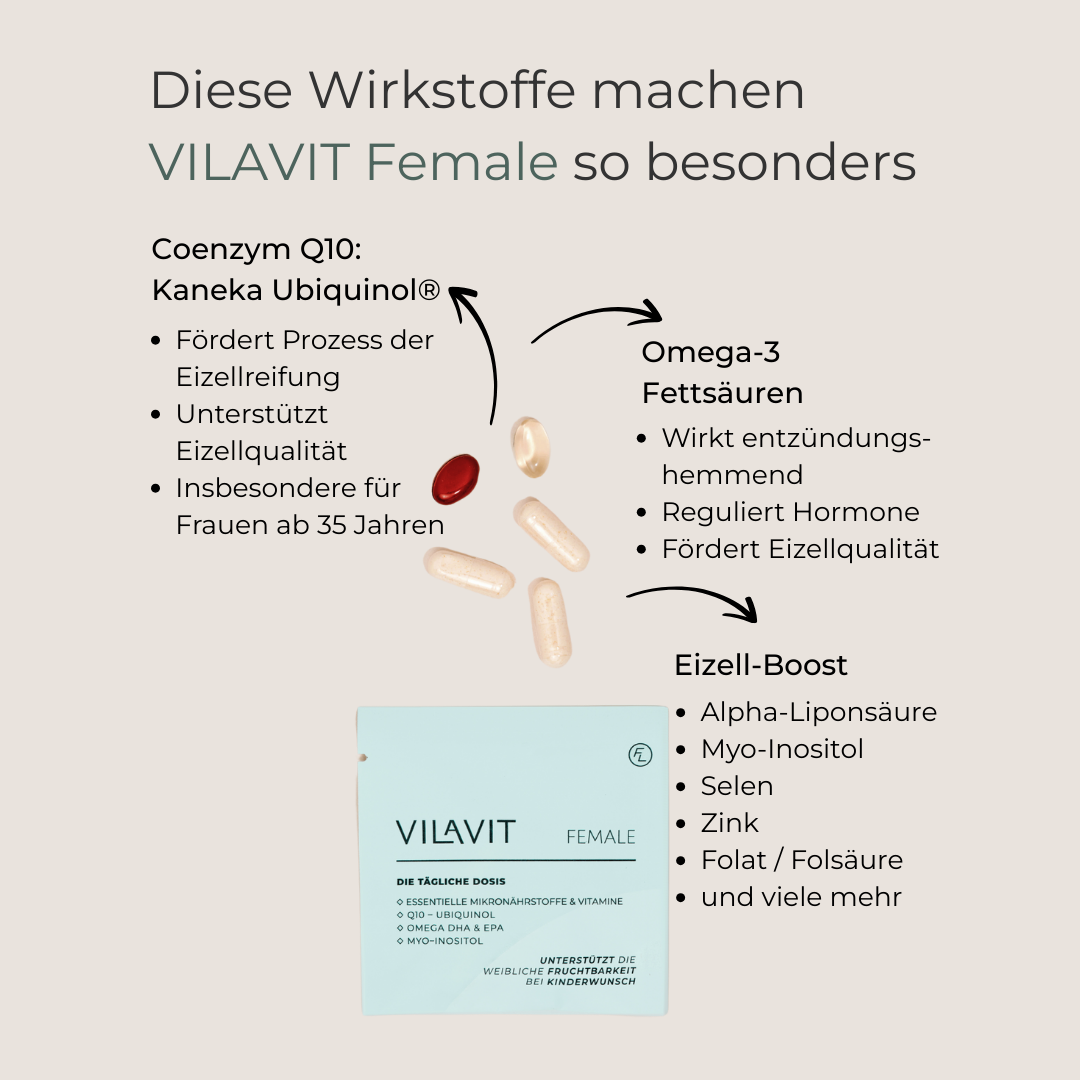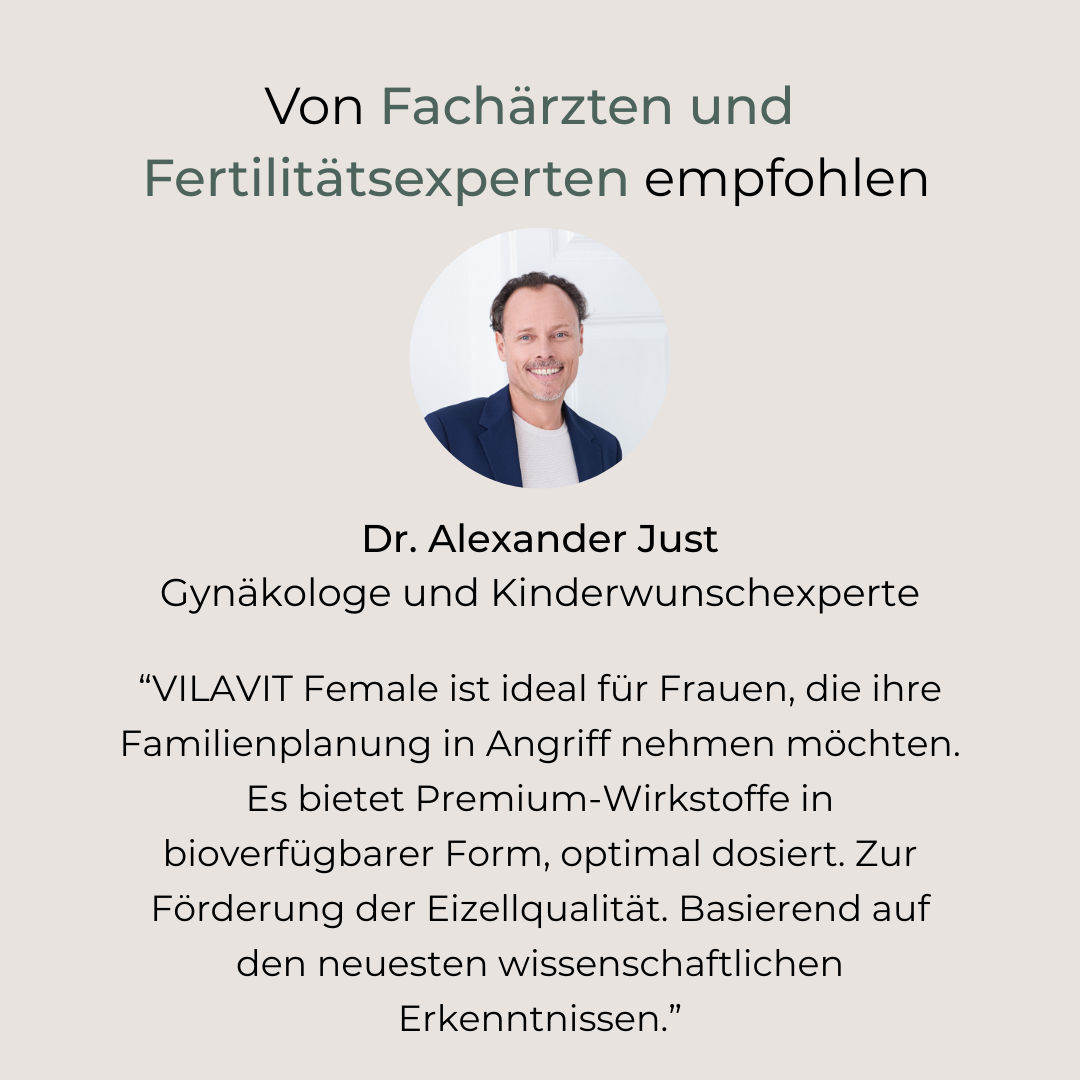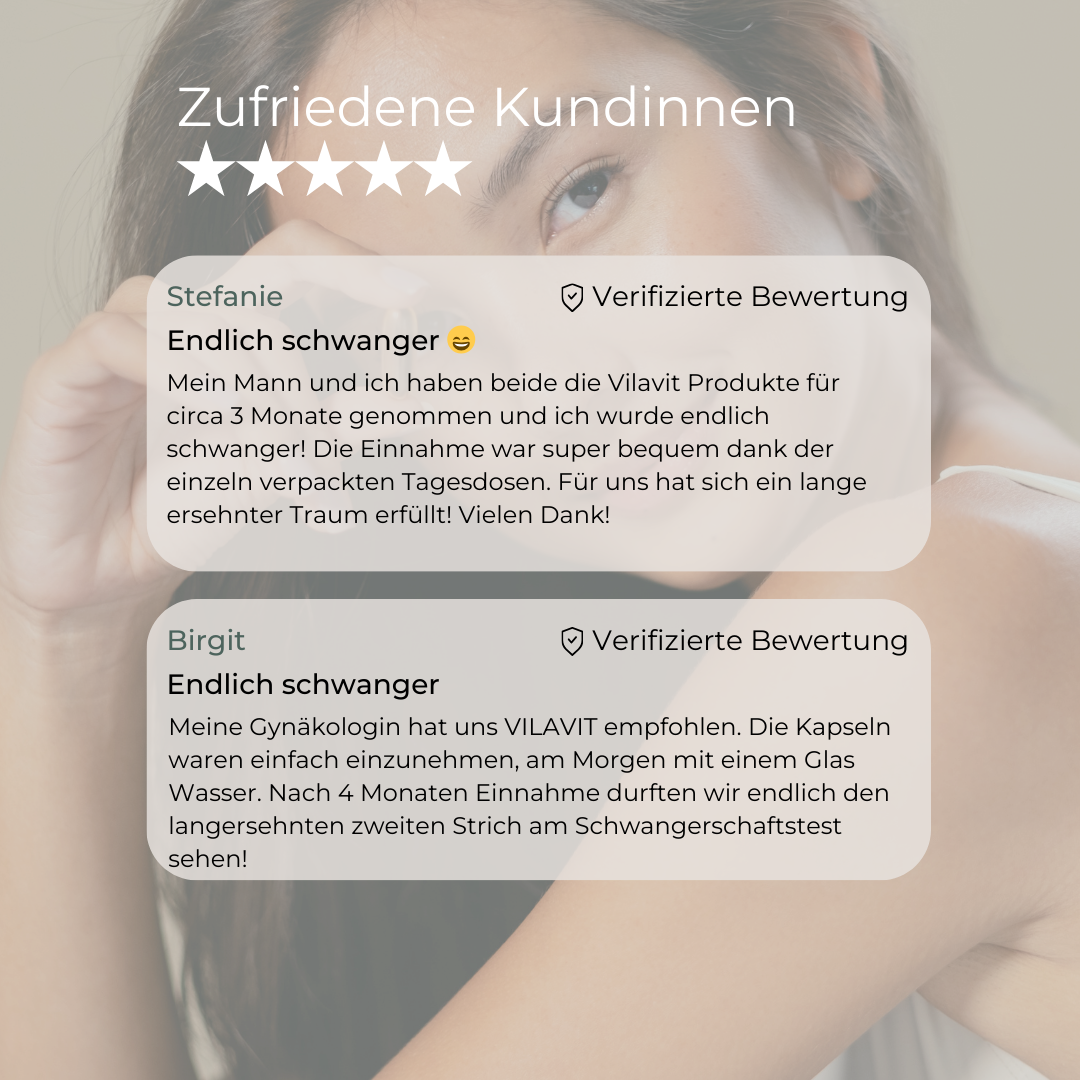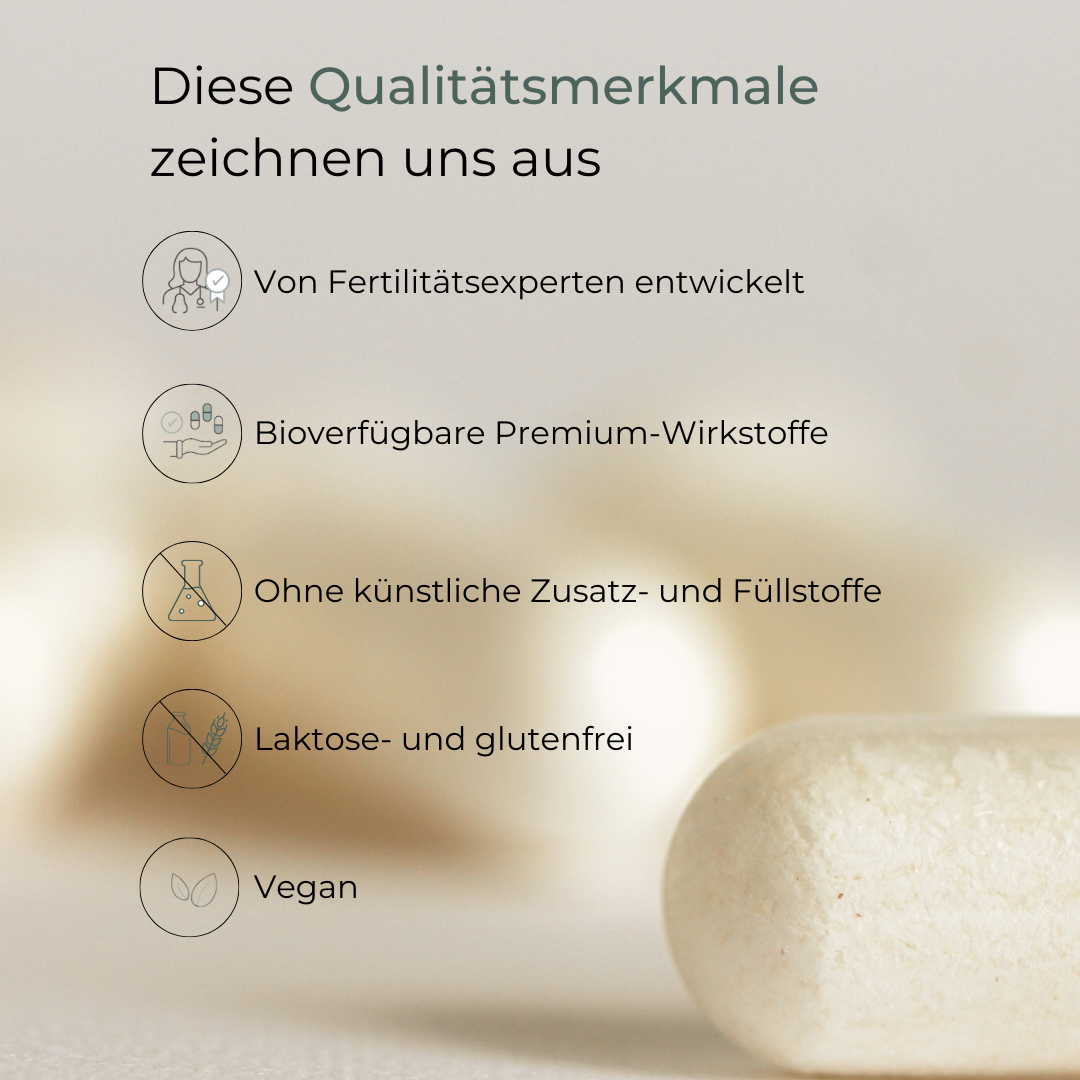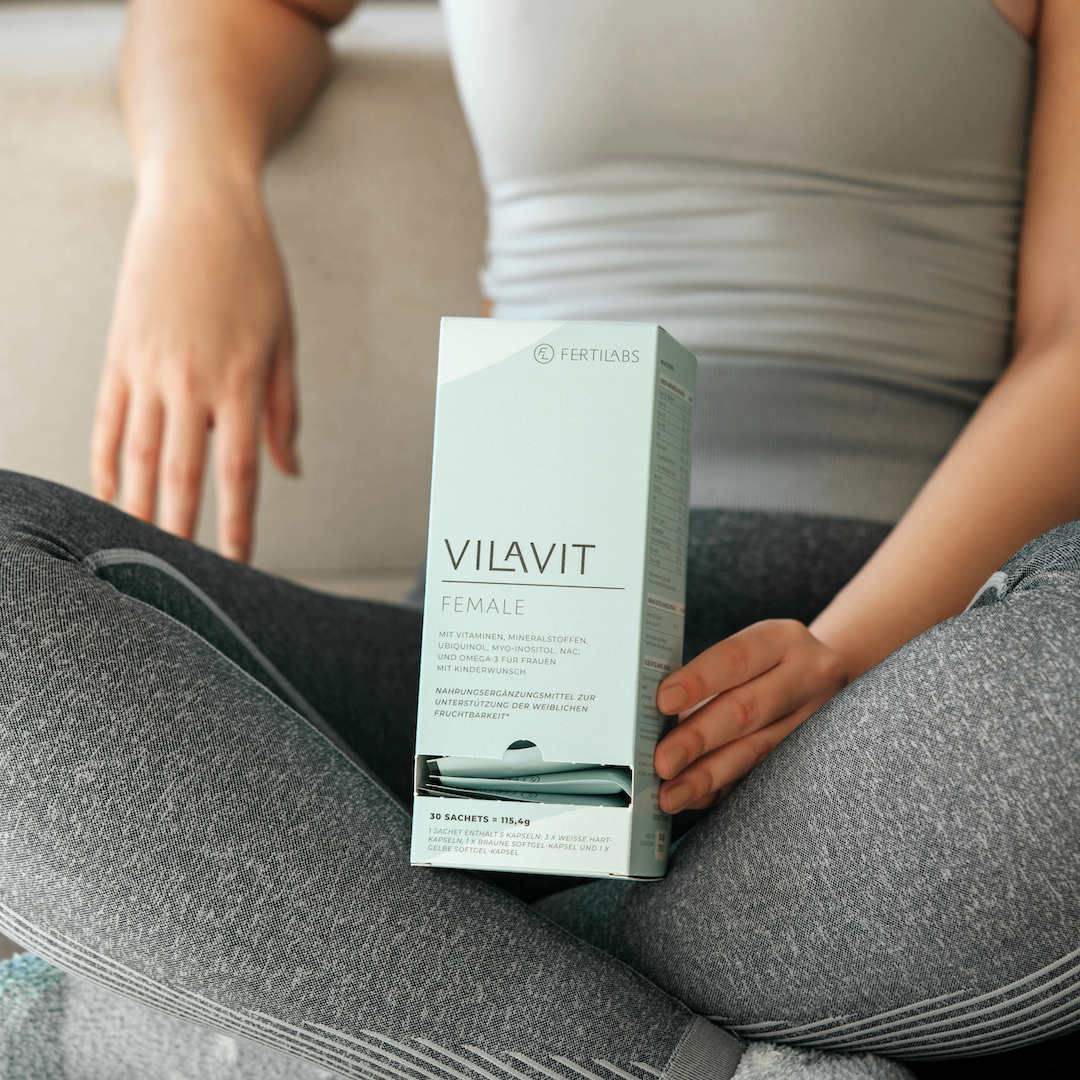Dear Bernadette, you have had a long and eventful journey to conceive - with ups and downs, medical treatments and finally a spontaneous pregnancy at 45. Today, you support women who want to have children holistically with yoga, mental focus and in-depth knowledge of holistic women's health.
Can you tell us how your heartfelt project came about from your own experience? What exactly do you offer today - and what motivated you to accompany other women on this path?
My fertility journey was definitely long, but full of insights. I stopped taking the pill at 29 - in the belief that it would soon work. I never thought that four years later I would still be waiting for a positive pregnancy test.
At first, everything was checked - everything seemed normal. But six months later, it turned out that my husband's semen analysis was not optimal. My tip to all couples: don't wait too long, the male side should also be examined early on.
After further tests and unsuccessful months, we took the plunge and went to the fertility clinic. The first attempts there were also unsuccessful. This was followed by several inseminations and two null fertilizations - an emotional rollercoaster ride. Only an ICSI, in which only a single egg could be fertilized, brought the longed-for miracle: my first son.
The desire for a sibling turned out to be another test of patience. My AMH level was now very low and I was considered a low responder - a maximum of two eggs per puncture. But at the age of 39, I had another positive test in my hand: my second son was on the way.
Luna Yoga - a yoga practice specially developed for women - had already accompanied me on the way to my first child. When I was trying to conceive my second child, yoga became my anchor again. I practiced regularly, treated myself to fertility massages and listened to my body.
These experiences inspired me so much that, in addition to my traditional yoga teacher training, I also did a fertility yoga course - to support women during this sensitive time.
And then the unexpected happened: in the middle of the first year of my Luna Yoga training - at the age of 45 - I became pregnant again spontaneously. Without any treatment at all.
What did I do differently? I practiced a lot of yoga, lived consciously, ate as healthily as possible, enjoyed life - and never stopped believing in my miracle.
Today, I accompany women on their journey with everything that has helped me: With yoga, sound knowledge about the desire to have children and holistic women's health - and the deep trust that every path is individual. And that miracles are always possible.
Fertility Yoga: Definition & general information
What exactly is Fertility Yoga from your point of view?
Fertility yoga is a specially tailored form of yoga that supports women emotionally and physically on their fertility journey. It's not just about physical movement - it's about connection, trust and holistic support.
The yoga poses (asanas) in Kinderwunsch Yoga are deliberately chosen:
They promote blood circulation in the pelvis, release blockages and allow energy to flow freely again. The area around the uterus, ovaries and pelvic floor in particular is gently activated and relaxed.
The combination of breathing exercises and meditation also calms the autonomic nervous system - which in turn has a positive effect on hormonal health. Physical and emotional space is created for new things.
Yoga is a wonderful way to gently support the body - without pressure, but with love and awareness - especially if you have been trying to conceive for a long time, are under hormonal stress or are undergoing artificial insemination.
How does it differ from traditional yoga?
Compared to traditional yoga, where the focus is on fitness, relaxation or spirituality, fertility yoga with its gentle physical exercises is specifically tailored to fertility and the menstrual cycle. Gentle, calm movements are also suitable in the context of hormone treatment, which is not the case with hormone yoga, for example. The focus is on the pelvic area, the hormonal system and a connection to the body and not, for example, on more flexibility. Breathing exercises and visualizations are also integrated, which are specifically tailored to stress reduction and the desire to have children.
Scientific evidence:
Are there any scientific studies or findings that support the effects of yoga on fertility?
Yes, there is - and the results are encouraging.
More and more studies are showing that yoga - especially in combination with breathing exercises and meditation - not only reduces stress levels but can also increase the chances of pregnancy, especially with fertility treatments such as IVF.
A well-known study from 2011 by Dr. Alice Domar from the Mind/Body Institute at Harvard Medical School has shown that women who regularly practiced relaxation methods, including yoga, during their fertility journey were significantly more likely to become pregnant during IVF treatment than women who did not. In the second IVF cycle of the study period, 52% of women who participated in mind-body therapy became pregnant, compared to 20% of women in the control group.
Another study from 2017 investigated whether women who practiced yoga regularly for three months and had experienced a failed IVF cycle had a higher pregnancy rate than women with the same conditions who did not practice yoga. In fact, the pregnancy rates in the yoga group were clearly higher than in the control group who did not do yoga.
How can yoga influence hormonal balance, especially in relation to reproduction?
If you want to have children, constant stress has a negative effect and can influence the hormonal system. Stress activates the hypothalamic-pituitary-adrenal axis (HPA axis) and leads to the release of cortisol, the so-called stress hormone.
Chronically elevated cortisol levels can:
-
disrupt the menstrual cycle,
-
inhibit the release of LH and FSH (important for ovulation and egg maturation),
-
and thus also reduce the probability of conception.
Through breathing exercises, meditation and consciously slow practice, yoga has a direct regulating effect on the autonomic nervous system, especially the parasympathetic nervous system - the part of the brain responsible for rest, regeneration and hormonal balance. Yoga measurably lowers cortisol levels, regulates the heartbeat and can reduce hormonal imbalance - a key aspect in the unfulfilled desire to have children.
In addition, certain asanas specifically promote blood circulation in the pelvic area, which improves the supply of oxygen and nutrients to the ovaries, fallopian tubes and uterus. This increased blood flow can:
-
support follicle maturation in the ovaries (important for egg quality),
-
lead to a better build-up of the uterine lining (endometrium) - a decisive factor for successful implantation after IVF or natural conception.
A well-perfused pelvic area is a basic physiological prerequisite for fertility - regardless of whether natural or medically assisted conception is being sought.
To what extent can fertility yoga offer psychological support and what role does stress reduction play in improving fertility through yoga?
For many women (and couples), the unfulfilled desire to have children is not only a physical challenge - but above all an exceptional emotional situation: hoping, waiting, disappointment, pressure, self-doubt and feelings of failure. All of this can lead to chronic psychological stress and, as previously mentioned, stress can disrupt the delicate hormonal balance.
-
Fertility Yoga helps here with breathing exercises and positive visualizations to regain confidence, relax - and thus get out of the constant control mode (“What else can I do?”).
-
Feelings such as fear, disappointment or being overwhelmed are allowed to be consciously perceived and gently transformed.
-
Breathing techniques also help to activate the autonomic nervous system (especially the parasympathetic nervous system), which measurably lowers pulse, blood pressure and cortisol levels.
- And all this with a mindful connection to the body, moving away from a demand for performance towards more space for acceptance, healing and, indeed, conception.
Specific recommendations:
Do you have a specific yoga practice that you particularly like to recommend for couples who want to improve their fertility?
In principle, women tend to come to me to support their fertility. At the same time, men also benefit from better blood circulation in the pelvic area and there are also special yoga exercises for men who want to have children.
One particularly beautiful and simple yoga exercise that is suitable for both women and men is the small pelvic swing. To do this, come into a supine position on your yoga mat. Your legs are straight and your knees are bent. Let your knees fall towards each other. Then place your hands towards your pelvis on your abdomen below your navel. With the next exhalation, nestle your back firmly into the mat. With the following inhalation, let go again and tilt your pelvis forward. Exhale Hug your back and tense your pelvic floor. Inhale Tilt your pelvis forward slightly and release your pelvic floor. Continue like this in your own breathing rhythm and repeat approx. 10 times. Then feel for yourself. What can you feel? Perhaps more warmth and blood flow in the pelvis?
Are there any special recommendations for women during their cycle?
A special feature of Fertility Yoga is that the exercises are designed to be cycle-conscious. This means that each phase of the menstrual cycle is carefully considered - with the aim of supporting the body holistically and lovingly adapting to the natural hormonal changes.
Menstruation (approx. day 1-5)
The cycle begins with the first day of your period. During this phase, the focus is on rest and regeneration. The uterus sheds its mucous membrane - and gentle, relaxing yoga poses help to relieve the pelvic area and also reduce any cramps. The entire cycle benefits when women allow themselves more rest during this phase.
Follicular phase (after the period until ovulation)
During this phase, the follicles in the ovaries mature. The energy increases again - and this is reflected in the yoga practice:
You can practise a little more dynamically now. The focus is on postures that promote blood flow to the ovaries and follicle growth and the development of the uterine lining, support hormone balance and build up energy - a powerful time.
Ovulation (approx. cycle day 12-16)
Around ovulation, targeted exercises are performed to promote circulation in the pelvic area and support ovulation.
Luteal phase (after ovulation until the next period)
After ovulation, the body prepares for a possible implantation. Now, fertility yoga is practiced again in a more gentle, nurturing and receptive way. The focus is on mindful movements, inner peace and exercises that lovingly support a possible pregnancy, for example through targeted breathing, visualization and building a safe, inner connection to the abdomen. PMS can also be alleviated in this way.
What factors should couples consider if they want to integrate yoga into their fertility treatment?
Even though my yoga sessions are generally very gentle, the following always applies:
The most important principle is conscious awareness - and trust in your own body. Each participant can decide for herself what is good for her at that moment. Mindful awareness is even more important during medical fertility treatment in particular, as the body can feel very different at times.
During hormonal stimulation
During this phase, the ovaries often react very sensitively, especially if they respond well to stimulation. Some women experience a feeling of pressure or a pulling sensation in the lower abdomen. During this time, the practice is particularly gentle - we often reduce physical movements to a minimum or work exclusively with breathing exercises, meditations and visualizations that give confidence and reduce stress.
After the puncture
Rest is particularly important after the procedure. I always recommend a short break from all physical exercises to give the body the time it needs to heal. Guided meditation or gentle breathing exercises can also help in this phase to calm down and cultivate trust.
The dreaded “waiting time”
After the transfer or in the second half of the cycle, we return to the practice of fertility yoga as in the classic luteal phase. The movements remain mindful, receptive and soft - accompanied by exercises that energetically support the uterus. In this often emotionally challenging time, meditations and visualizations are particularly helpful to get through the waiting with more ease and inner stability.
That is why I have developed my own online course (optionally with 1:1 support), which is specially tailored to the needs of women during fertility treatment. This course offers you support - both physically and emotionally - exactly in the moments when you need it. Due to my own experience with fertility treatments, I can empathize with this particularly well.
Are there any risks or contraindications that need to be considered?
Actually no. Fertility Yoga is a very gentle and mindful form of yoga practice that deliberately avoids intensive breathing techniques or stressful postures - such as those found in hormone yoga. It is therefore considered to be well tolerated and safe, even during fertility treatment or in sensitive phases of the cycle.
In my 1:1 sessions, I respond individually to the respective situation, physical requirements and medical particularities. Participants can also consult me at any time during the online course if certain exercises need to be adapted, e.g. for knee or back problems.
The most important rule always remains: listen to your body. Everything is allowed - nothing is a must.
Finally, is there anything else you would like to recommend to couples who are considering yoga to help them conceive?
Yes - my advice is: just try it out for yourself. Fertility yoga can be integrated into everyday life very gently and without any prior knowledge - and you often feel how beneficial it is after just a few sessions: physically, emotionally and mentally.
My free Fertility Yoga mini course is the ideal way to get started:
-
A gentle yoga session to stimulate blood circulation in the pelvic area,
-
a breathing exercise with a gentle abdominal massage to calm your nervous system,
-
and a visualization to bring you back into trust and connection with your body.
Simply follow the link and get started - at your own pace.
References:
-
Nayar, P. & Nayar, Kanad & Ahuja, R. & Singh, M. & Kant, Gabriel & Nayar, Kapil Dev. (2017). Can yoga affect ivf outcomes? Fertility and Sterility. 108.
-
Bouya, Salehoddin & Keikhaie, Leli & Hosseini, SaraSadat & Keikhaie, Khadije. (2020). The effect of yoga on uterine artery Doppler indices, maternal and fetal complications in pregnant women: A quasi-experimental study. Journal of Ayurveda and integrative medicine. 12.
-
Yadav, A., Tiwari, P., & Dada, R. (2024). Yoga and Lifestyle Changes: A Path to Improved Fertility - A Narrative Review. International journal of yoga, 17(1), 10-19.




